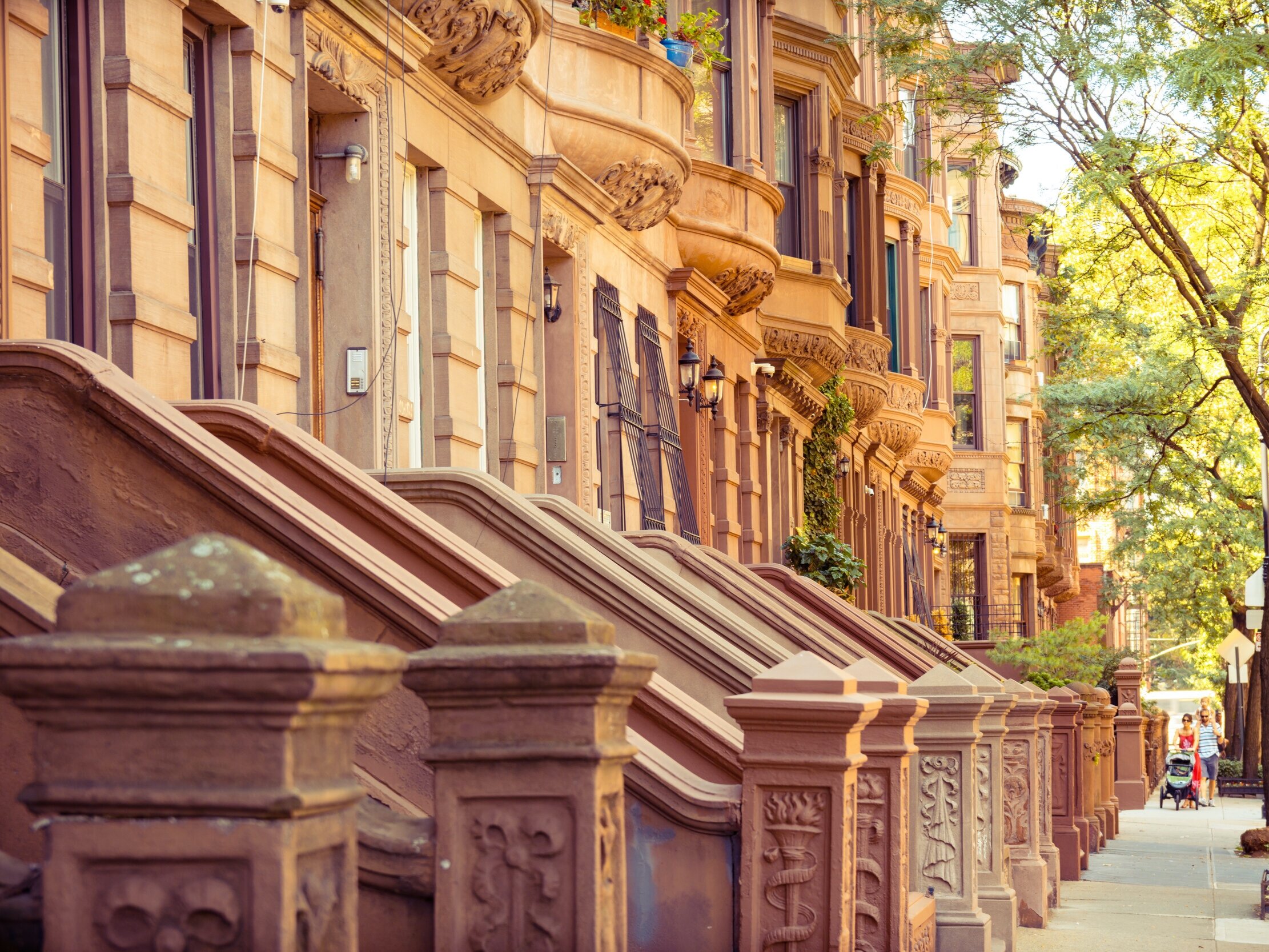The impressive diversity of the Upper West Side—towering skyscrapers and charming brownstones, open plazas and leafy parks—makes it as appealing to location scouts as it is to residents and tourists. To call out every movie and TV show filmed here would be close to impossible, especially as new movies and series continue to discover the neighborhood (welcome, “The Marvelous Mrs. Maisel”).
SoHo
Nearly all of SoHo falls within the SoHo Cast Iron Historic District, which became a National Historic Landmark in 1978, five years after being deemed a landmark by the city. This designation encompasses more than 200 buildings constructed in the latter half of the 19th century of cast iron, an innovation that presaged the use of steel and the construction of skyscrapers while allowing for the same elegance as carved stone. Because of this, nearly every block of SoHo offers plenty of impressive architecture and a sense of history.
East Village
The East Village is known for its happening nightlife. Old-school bars, music venues, and performance spaces share the streets with posh cocktail lounges and hip restaurants. Daytime sees a more laid-back crowd browsing boutiques, vintage shops and tattoo parlors, and dining at casual cafes. Once the epicenter of the city's punk scene, St. Mark's Place now features of-the-moment fast-food eateries and souvenir shops.
West Village
The West Village draws fashionable crowds to its designer boutiques and trendy restaurants. Quaint streets, some still cobblestoned, are lined with Federal-style townhouses and dotted with public squares. Notable venues include the Village Vanguard jazz club and the Stonewall Inn bar, site of the 1969 riots that launched the gay rights movement. The historically arty area also has piano bars, cabarets and theaters.
Harlem
Long known for its intimate jazz clubs, soul food institutions and African-American heritage, Harlem draws a diverse crowd of locals and visitors. Trendy eateries, stylish clubs and hip bars make for an energetic nightlife scene. The area features a mix of 19th-century brownstones and modern high-rises. Its main artery, 125th Street, is home to the iconic Apollo Theater, as well as chain stores and restaurants.
Tribeca
Tribeca’s shops offer a wide-ranging assortment of home furnishings. While modern and contemporary items that complement that works found in the neighborhood’s art galleries are abundant, there is plenty more to suit just about any taste.
The Upper East Side
Stretching from 59th to 96th Streets, the East River to Fifth Avenue, the Upper East Side is large enough to encompass three smaller neighborhoods: Lenox Hill, Yorkville, and Carnegie Hill. Though today they blend seamlessly into the UES as a whole, more than a century ago each had a distinctive ambiance.
Brooklyn Heights
Brooklyn Heights holds the honor of being home to the first historic district designated by New York City’s Landmark Preservation Commission, in 1965. Spanning from Old Fulton Street south to Atlantic Avenue and from the Brooklyn-Queens Expressway on the west to as far east as Clinton Street in parts, the Brooklyn Heights Historic District encompasses most of the neighborhood. Among its more than 600 buildings are hundreds that predate the Civil War.









